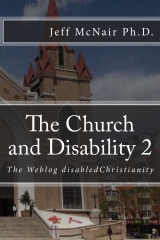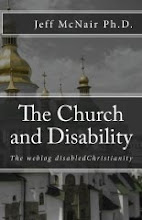According to wikipedia, the phrase "form follows function" originates from Louis Sullivan in 1896.
The idea was presented in a quote that says,
It is the pervading law of all things organic and inorganic.
Of all things physical and metaphysical.
Of all things human and all things super-human,
Of all true manifestations of the head,
Of the heart, of the soul,
That the life is recignizable in its expression,
That aform ever follows function.
This is the law.
The friend who shared this with me was considering this idea in the light of accessible architecture. So the form of say, a ramp, follows the function of allowing access to a structure for people who use wheelchairs. If their is not a ramp, it implies that the function of the building either did or does not include the presence of persons who use wheelchairs, because the form would not allow their presence.
As the quote indicates, however, form and function transcend notions of architecture. Forms that we see in policy, in program, in social structures, in many ways reflect the function of those. We can see that people are not accepted, for example, in some social settings, perhaps on some level at least because the forms of those settings were developed with out people having a particular characteristic present. If people try to be a part of that setting, all will find difficulty because the forms expressed were designed without individuals having that particular characteristic comprising the function, functioning within that environment.
When there are changes in the function, say indivuals with disabilities are present, the form must change: be it the form of social gathering, the form of human interaction, etc. Dissonance within a social setting can be reflective of the need for a change in form or function.
There is a lesson here for the church. If there is difficulty integrating individuals with disabilities within the church, it is likely a problem of the form that resulted from the perceived function. The forms of the church were designed or developed with a different function, i.e. not including people with disabilities. As the function changes where people with disabilities are now present, the form will also need to change to some degree, if only in the physical structures (ramps, hearing devices, sign language interpreters).
Likely when there is less difficulty with integrating people with disabilities, forms have changed reflecting changed function.
McNair
The idea was presented in a quote that says,
It is the pervading law of all things organic and inorganic.
Of all things physical and metaphysical.
Of all things human and all things super-human,
Of all true manifestations of the head,
Of the heart, of the soul,
That the life is recignizable in its expression,
That aform ever follows function.
This is the law.
The friend who shared this with me was considering this idea in the light of accessible architecture. So the form of say, a ramp, follows the function of allowing access to a structure for people who use wheelchairs. If their is not a ramp, it implies that the function of the building either did or does not include the presence of persons who use wheelchairs, because the form would not allow their presence.
As the quote indicates, however, form and function transcend notions of architecture. Forms that we see in policy, in program, in social structures, in many ways reflect the function of those. We can see that people are not accepted, for example, in some social settings, perhaps on some level at least because the forms of those settings were developed with out people having a particular characteristic present. If people try to be a part of that setting, all will find difficulty because the forms expressed were designed without individuals having that particular characteristic comprising the function, functioning within that environment.
When there are changes in the function, say indivuals with disabilities are present, the form must change: be it the form of social gathering, the form of human interaction, etc. Dissonance within a social setting can be reflective of the need for a change in form or function.
There is a lesson here for the church. If there is difficulty integrating individuals with disabilities within the church, it is likely a problem of the form that resulted from the perceived function. The forms of the church were designed or developed with a different function, i.e. not including people with disabilities. As the function changes where people with disabilities are now present, the form will also need to change to some degree, if only in the physical structures (ramps, hearing devices, sign language interpreters).
Likely when there is less difficulty with integrating people with disabilities, forms have changed reflecting changed function.
McNair











No comments:
Post a Comment